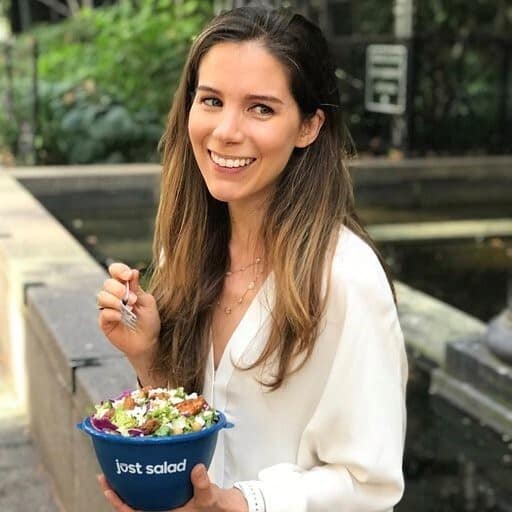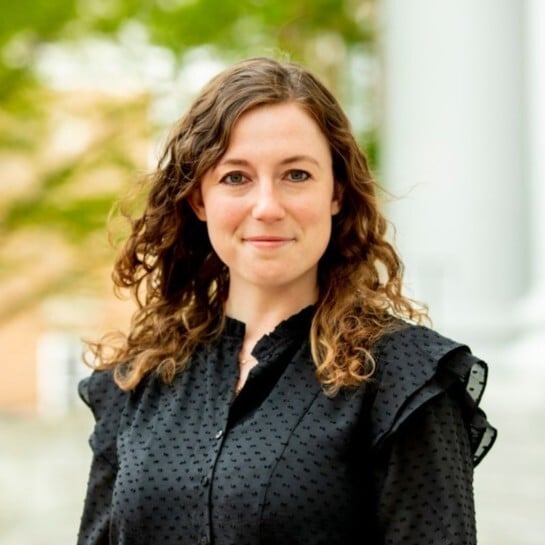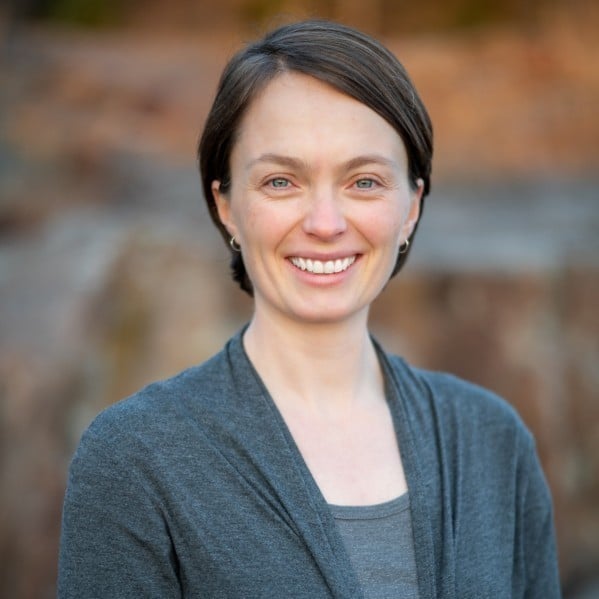Welcome to The Multi-usiverse. Alongside your guide, Garr Punnett, explore worlds of opportunity within the use of physical resources across companies and organizations. Consider this a field guide in scaling reuse, refurbishment, remanufacturing, and recirculation. We’ll learn from guests who have ventured down this path and carved their way. Our aim is to discuss the successes, opportunities, and challenges of scaling a connected, circular economy. On this episode we’re joined by Patty Lloyd, Director of Sustainability at Leopardo Companies, Inc.
Audio Transcript:
Garr Punnet (00:07)
Hey, everybody. Welcome back to the Multiusivrse podcast. My name is Garr Punnett, Chief Sustainability Officer here at Rheaply. We’ve started to shorten these interviews a little bit, so they’re nice and punchy and super informative. And we were joined by Patty Lloyd, Director of Sustainability for Leopardo. We got to have a great conversation around all of the work that Leopardo is doing as a general contractor here in Illinois and in the Chicagoland area, as well as what does joining this movement of focused around reuse of building resources means toward actually sourcing materials? What does that mean for the accounting and reuse of these materials? And how can you actually start participating in whatever organization you’re at or the community that you’re in around sourcing more of these materials and giving donating, again, collecting and aggregating these types of materials. Thank you so much for listening. Join me on the next one. And if you have any questions, please reach out to us at podcast@rheaply.com. Patty, so great to see you. Thank you so much for joining the podcast. Could you share a little bit more about yourself and Leopardo?
Patty Lloyd (01:15)
Yeah. Thanks for having me today. So I’m Patty Lloyd. I’m the Director of Sustainability at Leopardo Companies. We’re a general contractor that is headquartered in Hoffman Estates. We’re working all over the country. The work I do for Leopardo is strategize corporate strategy around sustainable policies. I run our ESG program, which we just started doing the last couple of years, and then I work on sustainable projects. So if there’s any project with the sustainability component at Leopardo, I work on that. And then thirdly, they just supported me a lot with having a lot of extracurricular involvement with other organizations and things like that. So I have a lot of roles outside of my company in the industry that are also pushing forward the sustainable built environment and then sustainable construction.
Garr Punnet (02:10)
Okay. So very typical of anybody in sustainability, there’s always more work to be doing. What’s really the biggest involvement? And why is it so important for GCs to be involved with sustainability, and why is sort of this of interest to Leopardo in a way, as a community stakeholder?
Patty Lloyd (02:32)
There’s a lot of responsibility involved with buildings. So many of the resources that we use to create a building come from the Earth. They have heavy emissions stories behind them from mining, extraction, harvest, transportation, and then the construction process itself. There’s a lot of data out there about how much the construction process contributes to the global emissions total in addition to just what the built environment does. So contractors have a very specific part to play in being responsible for the actions that we can be responsible for and helping to move the industry in that direction because there are games to be made.
Garr Punnet (03:21)
Yes, I think that’s so clear, too, in terms of what you all have done locally. Now in being again, an advocate for coming together with other partners in the industry and really pushing change, either on the Illinois level or even on the national front of advocating for change around either sustainable practices or focus on reuse. Can you speak to some of that work that you all have pushed forward, either with Mayor Lightfoot or the Biden administration, where you’ve advocated for change when it comes to sustainable management of materials or even in the construction space?
Patty Lloyd (03:58)
Yeah, it’s been really exciting. So Leopardo was part of the Building Green network that did the Biden build back better letter.
Garr Punnet (04:09)
Oh, that’s a lot of B. I think they’ve gotten that before. Yes.
Patty Lloyd (04:14)
Yeah. There was a lot of stakeholders involved with that, and it was a really exciting thing. And that was a very comprehensive letter that really covered heard many parts of the built environment in the future of it. I was able to sit on the Decarbonisation task force for Mayor Lightfoot, that was for the city of Chicago. And it’s specific to buildings. And so that hasn’t been yet released. But there were a lot of topics of conversation and development of that, including reuse of materials, net zero buildings, equity, all those things. And then I’ve been working for four years with the US Cream Building Council on a lead technical advisory committee, and that’s specific to the materials and resources category, which is what I work in when I do a job. We’re working on Mr. Credits. And one of the important credits there that I think relays directly to work you all do is the resource reuse, which is part of the sourcing of raw materials credit, and being able to prioritize that resource reuse up to 200% of its value. And the rating system really speaks to how important this is. So those are just some ways we’re working outside.
Garr Punnet (05:36)
I’m familiar enough with sort of the material resourcing and figuring out the credits associated with could you break that down, though, for me a little bit and for the audience on the complexity of sourcing those materials and then how that’s all sort of gone into creating reports for either a project or how that adds to sort of the impact that you all are starting to provide to it at Leo Pardo.
Patty Lloyd (06:00)
Yeah. This has been a really fun area that I personally feel really connected to. So the sourcing of raw materials, really complex Excel spreadsheet love it. And it’s based on dollar value. Your dollar value of your denominator is your total materials cost on the project, and then your percentage of sustainable materials is based on the dollar value of that. So let’s just say I have $50,000 of reused material on the project that would count as $100,000 in that calculator. So it would count as twice its worth. Whereas if I was just looking at certified wood, that certified wood would only count for one time. It’s worth. So we were able to weigh more heavily reused materials as a way to try to spur the marketplace. What we’re seeing on our side is it’s happening pretty frequently with FF and e fixtures, furniture and equipment. But on the building components itself, particularly with commercial building components, it’s a little more difficult to get them into the reuse stream. And more importantly, the infrastructure that’s not there that I think briefly is helping with is having the materials available for the architect to specify and then them still being available for the contractor to purchase to install in the project because you’ve got a pretty big time gap there from conception to completion.
Patty Lloyd (07:37)
And so that’s the infrastructure that I know cities like San Francisco are working on creating and that I’m hopeful to see start happening in our area.
Garr Punnet (07:46)
We are, too. I love that. So what’s the complications that you’ve seen in the industry then around the sourcing of how do these materials what type of advice do you have for those that are seeing materials maybe pile up or exist on their site where they’re trying to think, oh, how do I use this or what is this even good for? What type of recommendation do you have for those types of individuals?
Patty Lloyd (08:12)
I think that doing a waste audit at the beginning of a project. So much of this happens during the demolition phase. So first of all, you need to be hand in hand with your demolition subcontractor, because if you don’t have a partner that’s willing to participate in that, it’s going to make it real difficult. There’s often schedule implications. And so having the time in the schedule to get those things out in a way that maintains their integrity is really important. You can’t smash and grab something out, and then it be usable to someone else. So these things have to be handled with care and then finding the resources of where to divert them. Sometimes that’s challenging. At our company, I feel great. All our superintendents know, they can call me and say, Patty, I’ve got twelve doors. What do I do? And I can help find a source for them. But oftentimes there’s not a cohesive network of where to distribute the materials or where to get them from. And so I think those are some of the challenges as we ramp up development of this new industry.
Garr Punnet (09:20)
No, you’re absolutely right. It’s getting people the options that they could actually take. We need to move away from, although important, the manual effort of picking up the phone. You don’t need 20 calls, Patty, every day saying, where does this go? We all need something that we can turn to, to say, oh, this can head this direction. And knowing that that flow will be taken care of because it’s going to maybe a local deconstruction type nonprofit who then can figure out the next purpose for it. So I love that and I love that you are the manual directory there, too, that they have you as a resource.
Patty Lloyd (10:01)
Can I interject? I feel really strongly that we have to be able to do these things at scale. So it’s great that our guys know they can call me, but that’s only twelve doors. How do we move 1200 doors? And in order to continue to conserve our valuable landfill space and conserve these precious materials that are not waste, we need to be able to do it at a much bigger scale. We need all the GCs to be able to do it. And so I just wanted to point that out. It’s great to do these small, good things, but getting to scale is really where it’s at.
Garr Punnet (10:38)
Thank you for absolutely interjecting and enforcing that. You’re exactly right. How does this play into here in Chicago and Chicago land? How does this play into our new climate action plan and what’s sort of been proposed around deconstruction or reuse of materials in our community?
Patty Lloyd (10:58)
Yeah, it’s really exciting. So first of all, I would say that Cook County does have a recovery piece, and I don’t want to call it waste ordinance, but they have a waste plant in the residential construction marketplace. For Cook County, there’s a recovery piece. I was really excited to see the draft climate action plan from the city of Chicago because first off, it ups the criteria of waste diverted from landfill. So right now the city of Chicago has a 50% waste diverted from landfill ordinance for all construction, demolition and debris. But secondly, and far more exciting to me was the added language in that they’re going to start prioritizing reuse over recycling. And if you look at the hierarchy of waste, the reuse comes before the recycling because you got less inputs of energy, less inputs of material. And so it’s just like the Trophic pyramid. Your best value is at the top.
Garr Punnet (11:58)
Absolutely. What do you think this is going to mean for the industry? How does this affect when something comes down from and it’s not quite even policy yet. It’s in the planning form. It’s essentially almost saying, hey, this is where the city thinks it’s going to be going. How does that even in its early stages start to affect decision making across GCs, across the industry? From your experience.
Patty Lloyd (12:25)
Sarcastically, if the supply chain issues continue as they are, we can all take a lot of pressure off of the supply chain by really jumpstarting this. But I think that the industry commercial construction has been slow to adapt to this idea, and I think there’s some risk that contractors might see. Is it structurally stable, what’s the warranty, period?
Garr Punnet (12:53)
Totally.
Patty Lloyd (12:55)
Are there harmful components in it? And I think there’s a lot of work going on behind the scenes to start to answer those questions and to start standard setting. And I think those things are going to do a tremendous amount to get things moving more quickly in the construction industry.
Garr Punnet (13:15)
That’s almost I guess then if I had an emphatic point to make here is we’ve seen that happen often where there might be 99% of things that might be good, but it’s these edge cases that people can highlight and say, well, what if this, what if that if it doesn’t somehow meet some sort of standard or some sort of something and it’s like, well, that doesn’t happen all the time. You still have all these great materials over here. Why focus on why this particular 1% is messing up the whole system, Rheaply? We should just figure out how do we solve that? 1%, how do we issue new warranties? How can we get sort of even upstream manufacturers to participate in this type of system where they can say, oh, our doors are they can live up to this percentage of wear and tear or something. Maybe they can assert that even though they’re deconstructed and they’re still a good value, they might be able to put a warranty on, and then maybe that even drives revenue for them somehow. So that could even be of interest. But I think in that, too, I’m highlighting that we shouldn’t live in those edge cases of the what ifs it really needs to be about, okay, there’s so many materials, there’s so much good that’s going to be coming from all of this action that we’re taking that we need to start thinking about how can we do something, not the reasons why we can’t.
Garr Punnet (14:35)
Yeah.
Patty Lloyd (14:36)
I’d also like to say there are some tools out there that can be used as a contractor. The contract documents are our Bible. Like, if it’s in the specifications or it’s in the drawings, that’s a contract document for us. We have to execute what’s there. And so for architects, they can write these things into their specs. They can either write recovery language or they can specify specific materials. And I know you and I have spoken about great companies like Doris Unhinged. They’re receiving the doors, but then they’re also refurbishing them and they’re contacting people and saying, can you put these in your specs? So as architects are trying to meet their AIA 2030 commitments and other materials commitments, I think they’re going to start trying to figure out how to close some of the loopholes that are in the industry that are preventing them from being able to specify reused materials. And then that empowers us as the contractor to purchase and use them. And so I think there’s some great movement coming also, not just to yawn on and on, but the whole ESG movement people are having to report. And when you’re looking at materials, you’re looking at avoided carbon.
Patty Lloyd (15:56)
And so capturing that Tiger by the tail and being to say, hey, we avoided this much embodied carbon because we reused these structural members, that’s a big deal.
Garr Punnet (16:06)
It is a big deal. And I think so much, too that at least I speak about sometimes is really about not only is something going to be of value, and there might be a dollar value associated with a particular material type or item. But I’m a true believer that there’s going to be more decision making based on that carbon value, and that’s actually, in even some cases, might outweigh the value of the material itself, where it’s like, no, we know that we’ll pay $0.05 extra per whatever type of unit metric, but it’s still worth it. And it’s still actually because of the type of return that we might get on either the certification of a building or the cost associated with hopefully someday with carbon itself. So that could be huge. Yeah. Tell us a little bit more about sort of what’s next for you and what you’re working on and what Leo Pardo is sort of thinking about for the future of sustainability from a GC perspective. What sort of has your attention?
Patty Lloyd (17:09)
Yeah. For me personally, I am finishing my last year of grad school, and I’m taking my Capstone prep this summer, and in the fall I’ll be doing my Capstone project, which is all about reused materials specific to my industry. So I’m hoping to do some real research and take some real action to help move it forward in my company, in my region and in my industry. So I’m really excited about that. If you can work on things you’re jazzed about, your chances of success are usually quite a bit higher. Secondarily, Leo Pardon will be starting our formalized ESG program in 2023. We’ve been developing it for about a year, and it’s a privately held company. We don’t have to do it at the way that a publicly held company does. And so that really gave us the opportunity to curate it to our own needs. And I have four environmental goals, and one of the strategies is particular to both recovering and then reusing materials. So I’m really excited to have that be something that’s blessed by senior management and by our executive so that it will go forward. So that’s really exciting.
Garr Punnet (18:31)
I love that. And I think that speaks to, again, the local advocacy that any organization can take in pursuing standards within their own organization and pushing that across other different communities as well. What would you say would be a call to action, though, for anyone looking to start something? Where did you start when pushing this new framework or this new ESG project that you’ve been working on? How does one even do that at an organization? How does it start? How can you sort of lay the bricks for someone else?
Patty Lloyd (19:04)
I will say that we do have an advisory board that asked us to engage in ESG. I was aware of it. I had introduced the concept of the company, but it really took that higher level group saying, this is a business decision and this is important for business. And so I was very thankful and appreciative of that. I always like to say, like, what do you do with your own life? Like, if my kid says, I need some new jeans, I take them to a resell shop and find some pants. And to adopt that philosophy. Through most things in my life, we’ve been able to avoid a lot of costs, and we’ve been able to not support this consumerism model, the take make, waste model that we currently have in our company or I mean, in our country, that’s great on a personal level for people. But when you’re talking about businesses, it’s a little different. And so the priorities and the strategies have to be different. I literally spent the day Loading two pallets for zero landfill Chicago with all of our architectural samples, binders, trace, secretarial things. All those things are going to be two pallets of stuff avoided from the landfill that someone else is going to find a good use for.
Patty Lloyd (20:34)
We’ve probably been doing that for a decade, but I would say we started small thinking about these things as a company, and then we continued to grow. And definitely having a squeaky wheel on board helps, right?
Garr Punnet (20:50)
Yes, exactly. May we always be the squeaky wheel of saying, hey, all that we’re doing is great, but we could do this new thing. Yes. Well, I love that because, again, it speaks to the purpose of why we’re talking right now, which is once you start to see change and see things that go into reuse and speak towards decreasing your own impact personally, you can’t unsee it and it starts to infiltrate how you think of everything else around you and how you can create more efficiencies, decrease cost, and then also scale positive impact. So I love that and I love the way that you think on that one. Thank you so much for joining us today. This was so impactful and so meaningful, I think, in terms of really educating our listeners into a how can you start something? How can you start to think about what this means internally to your company, even if you’re a GC or not? Any other parting wisdom that you might have for anyone listening?
Patty Lloyd (21:46)
Yeah, I think that people need to feel empowered to take the first step. You don’t need to wait for a senior level person to say that you need to do this stuff. You don’t always have to have an imperative from up above to start moving forward. Often the person that is leading these things at firms is not someone with an official sustainability title. And I’ve definitely seen that in some of the networks I have. And so really just starting to create your network of people that find this important is the first way to go. But I’m really excited about the momentum that’s happening right now, and I think it’d be really positive.
Garr Punnet (22:35)
I think you’re exactly right. And it all could start with somebody writing a simple memo that says, hey, this might be important and then for all you know it gets circulated and then it gets elevated and then decisions start to get made because of that. So I absolutely agree. Just write your thoughts down, get your sustainability vision in order and you never know what could happen too. Is that circulates throughout the organization. So I agree. Just get something on paper. Well, Patty, thank you so much for joining. It was a pleasure to see you again and I look forward to our next conversation.
Patty Lloyd (23:03)
Thank you. Have a great day.
- Description
- Video
- Transcript




